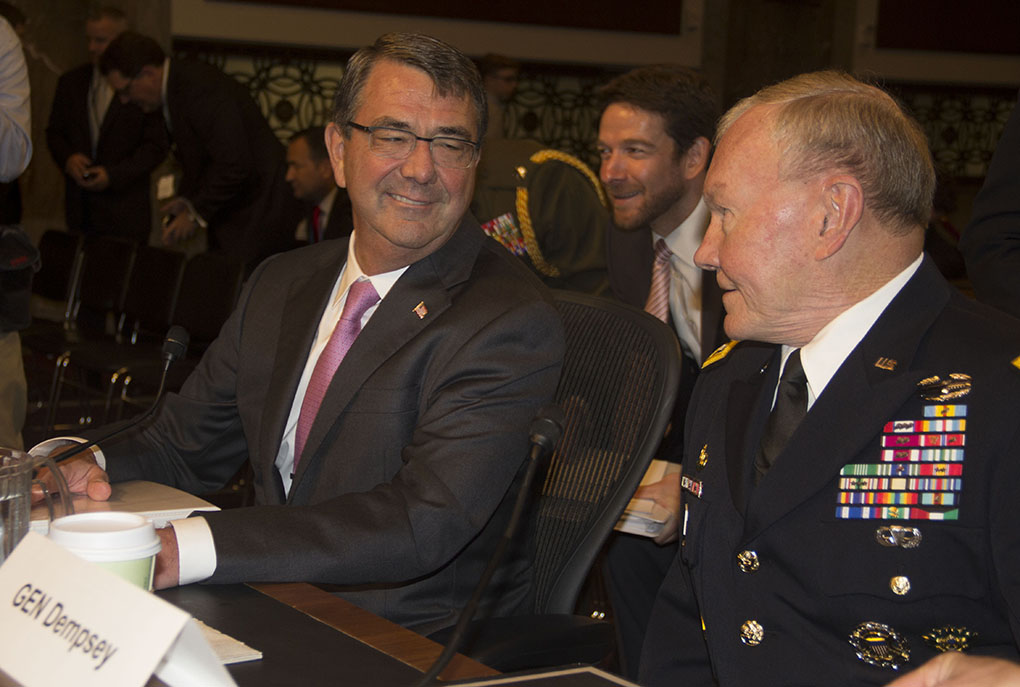WASHINGTON – As the Islamic State continues to gain territory in the Middle East, the fall of Mosul, a city of Northwestern Iraq, has been ISIS’ largest victory to date. More than a year after it invaded Iraq’s second largest city, ISIS is still in control of its population of more than one million people.
With nearly daily reports of new land ISIS has conquered, military experts say the U.S. will not successfully counter the Sunni extremist organization without making Mosul a key focus.
The Islamic State’s takeover of Mosul doesn’t mean just a physical dominance over the land and psychological problems for the city’s citizens. An estimated 60,000 Christians fled when the group took over, and those who stayed are under constant intimidation with things like ISIS shutting down schools and destroying rival Shia mosques.
“On a larger psychological scale, which frankly is what’s really hurting our national interest, is that this is not just a problem for Iraq or more for Iraq and Syria,” said Steven Bucci, senior fellow for Homeland Security and Defense Issues for the Heritage Foundation. “It’s a problem for the whole region and is having implications here in the homeland, in that, when an organization like ISIS can stand up to the United States of America and the coalition of its friends, and not be crushed… that’s tantamount to a victory” against the West.
Bucci served as an Army Special Forces officer for more than 30 years and is a former Pentagon official. He believes the U.S. has a vested interest in countering ISIS and needs to take a more aggressive approach because of the movement’s lone wolf attacks brewing in the homeland.
“Their ability to continue to control places like Mosul, to continue to basically thumb their nose at us, even though we dropped bombs on them, continues to allow them to be an incredible recruitment magnet to either get folks to come there and fight with them, or take actions in their homeland like we’ve seen a couple times here in the states,” Bucci adds.
Stabilizing Mosul will be no easy task; it will require re-establishing local leadership and rebuilding a developed city that has almost completely been destroyed. The military force needed to combat ISIS will yield more destruction for the city, but Bucci says things will have to get worse before they can get better. A more aggressive strategy is essential in not only to release ISIS’ tight grip on the Middle East, but to keep the U.S. safe in the future.
“The only way to stop that from happening is to crush them, literally to go in and destroy them,” Bucci said. “They’re not going to negotiate with anybody; they’re not going to make concessions in any way. The only way to remove that magnet is to destroy it.”
If the U.S. does not seriously consider Mosul in its counter-ISIS strategy, Bucci predicts other religious extremists will attempt to take over the city in the future.
“Unless we go in and help them directly, is going to be the Shia militias, which is not necessarily a good thing,” Bucci said. “Their track record of dealing with predominately Sunni population centers has been pretty visible. They get in there and yea, they might chase ISIS out eventually, but their attitude towards their Sunni brothers is colored by the decades of abuse that they got from the Sunnis from under Saddam Hussein.”
As ISIS continues to gain more territory, counterinsurgency strategies must not lose sight of reestablishing Mosul to take back ISIS’ largest victory and control. ISIS will continue to dominate Middle East territories so long as it has a hold on the regions biggest cities. Even with U.S. troops being in the midst of withdrawing from the Middle East, aggressively working to eliminate ISIS is key for both national interest and to keep the homeland safe.


![Chris Voss is the founder and CEO of the Black Swan Group. “There are few people that have worked for the [U.S.] government that know as much about international kidnapping as I do,” he said. (Photo courtesy of the Black Swan Group)](../../../wp-content/uploads/2015/06/ChrisVoss-blueshirt-small.jpg)









